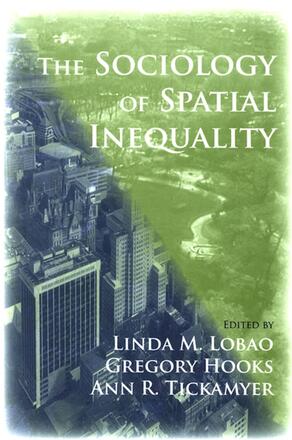
The Sociology of Spatial Inequality
Alternative formats available from:
A sociological look at the role of space in inequality.
Description
2007 CHOICE Outstanding Academic Title
Sociologists have too often discounted the role of space in inequality. This book showcases a recent generation of inquiry that attends to poverty, prosperity, and power across a range of territories and their populations within the United States, addressing spatial inequality as a thematically distinct body of work that spans sociological research traditions. The contributors' various perspectives offer an agenda for future action to bridge sociology's diverse and often narrowly focused spatial and inequality traditions.
M. Lobao is Professor of Rural Sociology, Sociology, and Geography at the Ohio State University. She is the author of Locality and Inequality: Farm and Industry Structure and Socioeconomic Conditions, also published by SUNY Press, and coauthor (with Paul Lasly, F. Larry Leistritz, and Katherine Meyer) of Beyond the Amber Waves of Grain: An Examination of Social and Economic Restructuring in the Heartland. Gregory Hooks is Profebssor of Sociology and Chair of the Department of Sociology at Washington State University. He is the author of Forging the Military-Industrial Complex: World War II's Battle of the Potomac. Ann R. Tickamyer is Professor of Sociology and Chair of the Department of Sociology and Anthropology at Ohio University. She is coeditor (with William W. Falk and Michael D. Schulman) of Communities of Work: Rural Restructuring in Local and Global Contexts.
Reviews
"…makes an important contribution to inequality studies. It is an invitation to further explore the innovative force of a relational theory of space for sociology." — American Journal of Sociology
"This collection of first-rate scholarship has the potential to become a classic reference title." — CHOICE
"The editors provide the first overview of the state of spatially oriented research on inequality in sociology, which is much larger and encompassing than many people realize, spanning demography, human ecology, urban and community sociology, comparative sociology, as well as stratification." — Leslie McCall, author of Complex Inequality: Gender, Class, and Race in the New Economy
"This book is a first of its kind. It brings the scattered literatures together, imposes some badly needed conceptual structure, and provides a variety of applications of spatial inequality research. One need look no further than the introductory chapter to sense the capacity of the writers to synthesize seemingly disparate literatures." — Charles M. Tolbert II, coauthor of Work in the Fast Lane: Flexibility, Divisions of Labor, and Inequality in High-Tech Industries